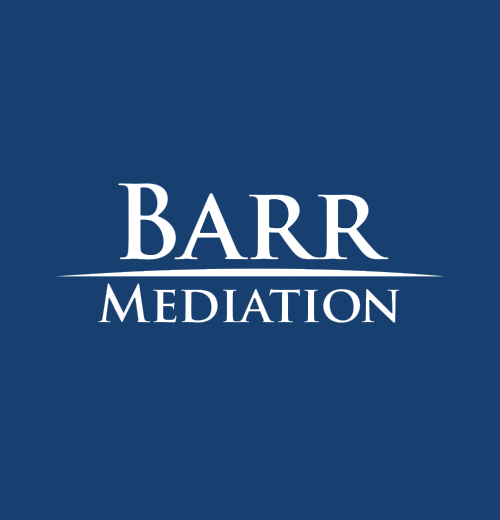Environmental and toxic tort litigation matters are often complex and usually involve many parties; this is why mediating them requires a unique combination of approaches – far beyond the classic caucus-only mediations that are standard today. While some toxic tort and environmental cases can be settled quickly in a caucus format, most require significant joint sessions and real dialogue among the participants.
For the past 17 years, I have been mediating environmental and toxic tort matters and have significant experience in everything from wrongful death and severe personal injury toxic tort cases to highly-complex, multi-party, eight figure CERCLA matters.
As a mediator, my goal is to work with the parties to structure the very best mediation process, hand-tailored to achieve a sustainable resolution.
CERCLA Cleanup Matters
When mediating cleanup litigation matters, environmental consultants play a vital role in the mediation, and I will often set up a process that allows them to work together to discuss the scope of testing and the scope of the cleanup. These joint sessions are indispensable to help the parties reach agreement on site characterization and remediation issues.
Based on my nearly two decades of mediation experience, managing the allocation discussion in a cleanup action is the key to a successful settlement and is also often the biggest obstacle in resolving these cases. It’s rare that the parties are willing to discuss openly their respective allocations together – in part because there are often so many parties. In these kinds of cases, I have found success in using a confidential allocation process. During this exercise, I first work with the parties collectively to help them reach broad agreement on the most critical allocation factors. Next, I ask each party to use those factors as a guide in allocating 100% of liability to the other parties, excluding itself. I’ve found this informal voting process to be an invaluable tool in promoting settlement.
Outside-the-Box Resolutions
When we focus exclusively on the classic “liability/damages” discussion, we may miss other important possible resolutions. It’s always important to ask whether there are other ways to make a deal in addition to, or in lieu of, a discussion of damages. To do this, I facilitate the dialogue so parties can discuss their real interests and needs.
The following scenarios describe two outcomes in my mediations where the parties agreed to unique resolutions of the litigated matters – once their interests were clearly identified.
Cleanup Matter: A Win-Win Solution
In this case, the plaintiff purchased a piece of property only to learn later that it was contaminated; accordingly, he sued the prior owner and operator for cleanup costs under California Superfund law and the common law.
During negotiations, the plaintiff expressed his regret for having purchased the property at all. It was just an offhand comment, but I was persistent in exploring it further. I suggested – privately – that the defendant consider buying the property from the plaintiff at its fair market value as if it were clean property. Defendant liked the idea and offered to repurchase the property and to be solely responsible for the cleanup. Plaintiff agreed.
This settlement satisfied the plaintiff’s interest to no longer be the current owner of contaminated property while also being made whole on his investment. At the same time, it also satisfied the defendant’s interest to spend the money on cleaning up the property rather than in litigation. As it turned out, after the defendant cleaned up the property, it sold the property at a profit. A true win-win result for the parties.
Although this solution seems simple, and even obvious, once we think about it, it doesn’t always present itself easily when the parties are having a classic “liability/damages” discussion. This is why it’s important to be open to the “exploring interests” discussion which can happen in a private caucus or in a joint session.
Air Regulatory Matter: A Continuing Relationship
In this mediation, I was working with a government regulatory agency and a manufacturer on the issue of whether the manufacturer was violating an air emission rule. The parties could have engaged in the classic, caucus-only mediation, but I encouraged them instead to meet in joint session to discuss the regulation at issue. During joint session, the manufacturer expressed its difficulty with complying with the rule’s testing requirements. The discussion resulted in an agreement where the regulatory agency and the manufacturer participated in a joint study of the rule to determine whether or not the rule should be amended. The parties worked together for nearly a year and, based on the study, certain testing procedures were altered.
In agreements such as these, where adversaries agree to work together, two things are essential: a certain level of trust between the parties, and the ability to verify the activities and data generated by each side. I’ve found it very useful to build verification procedures directly into the settlement agreement itself, to ensure continuing trust between the parties.
Toxic Tort Matter: Structuring the Multi-Party Case
Many toxic tort matters involve multiple plaintiffs or multiple defendants, and sometimes both. I’ve found that setting up a process before the mediation date is very helpful in ensuring a smoother and more participatory day. In matters involving many defendants, a pre-mediation discussion on allocation criteria can be very useful. For example, the criteria can include the number of years each defendant sold the product at issue, the amount of product sold by each defendant, and the various uses of each defendant’s product.
In matters involving many plaintiffs, it’s essential to have the parties and the attorneys participate in how the discussion on damages will be organized. For instance, creating a settlement process that categorizes plaintiffs who have serious personal injuries and those who have lesser injuries is helpful in organizing the negotiations.
The more participation the parties and lawyers have in structuring the mediation process, the greater buy-in they will have in the settlement outcomes.
Conclusion
Environmental and toxic tort matters require thoughtful and hand-tailored mediation processes. At times, the mediator needs to be a strong facilitator, particularly when structuring the mediation process or helping the parties in a discussion of interest-based settlement options. At other times, the mediator needs to be more evaluative, such as when the parties are seeking a risk analysis of the litigation. A seasoned mediator knows how to do both to ensure a productive negotiation.



